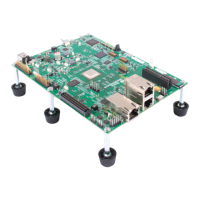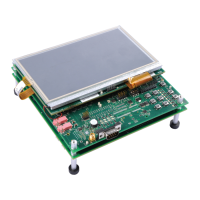4
Analog Front End IC TMS37122 - Reference Guide August ’01
Document Overview
Page
Chapter 1: Product Description. . . . . . . . . . . . . . . . . . . . . . . . . . . . . . . . . . . . . . 6
1.1 General Features ................................................................................. 7
1.2 References........................................................................................... 7
1.3 Circuit Description................................................................................ 8
Chapter 2: Electrical Description . . . . . . . . . . . . . . . . . . . . . . . . . . . . . . . . . . . 13
2.1 General .............................................................................................. 15
2.2 Power Supply..................................................................................... 17
2.3 Power-on-reset .................................................................................. 22
2.4 Limiter Circuits ................................................................................... 23
2.5 Wake Detector ................................................................................... 24
2.6 End-of-burst Detector......................................................................... 25
2.7 Pulse Position Demodulator............................................................... 25
2.8 Control Unit ........................................................................................ 26
2.9 FSK Modulator ................................................................................... 31
2.10 Configuration Memory........................................................................ 32
2.11 Resonant Circuit Trimming ................................................................ 44
Chapter 3: Application . . . . . . . . . . . . . . . . . . . . . . . . . . . . . . . . . . . . . . . . . . . . 48
3.1 Passive Entry Function ...................................................................... 49
3.2 Passive Start Function ....................................................................... 52
3.3 Battery Backup Function.................................................................... 54
3.4 Immobilizer Function.......................................................................... 56
3.5 Anti-Collision Function ....................................................................... 56
Chapter 4: Product Specification Data . . . . . . . . . . . . . . . . . . . . . . . . . . . . . . . 58
4.1 Absolute Maximum Ratings ............................................................... 59
4.2 Recommended System Operating Conditions................................... 60
List of Figures
Page
Figure 1: TSSOP Package (Top View) .......................................................... 7
Figure 2: System Arrangement of 3D-Analog Front End IC TMS37122 ........ 8
Figure 3: Typical 3D-AFE Application Including Battery Backup Function... 10
Figure 4: Block Schematic of TMS37122..................................................... 16
Figure 5: Standard Battery Supply - Schematic ........................................... 17
Figure 6: Schematic for Rechargeable Battery Supply ................................ 18
Figure 7: Schematic for Battery Backup Supply........................................... 19
Figure 8: Test Arrangement with Digital Interface Test Box and PC............ 21
Figure 9: Schematic of Reset Flow .............................................................. 22
Figure 10: TMS37122 Limiter Circuits.......................................................... 23
Figure 11: Block schematic of Wake Detector ............................................. 24
Figure 12: EOB Detector and Pulse Position Modulator Function ............... 25
Figure 13: Overall State Diagram of Control Unit......................................... 27
Figure 14: Initialization State Diagram of TMS37122................................... 28
Figure 15: Control Unit Timing Diagram....................................................... 29
Figure 16: Wake Pattern Detection State Diagram ...................................... 30
Figure 17: State Diagram of Transparent Mode........................................... 31

